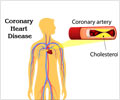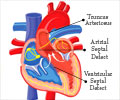Novel bioprint complex tubular tissues discovered may help replace dysfunctional vessels and ducts in the body.

‘New 3D bioprinting method may help potential viable replacements for damaged tissue where the bioprint tubular structures resemble those in the human system.’





"This bioprinting method generates complex tubular structures that mimic those in the human system with higher fidelity than previous techniques."Many disorders damage tubular tissues: arteritis, atherosclerosis and thrombosis damage blood vessels, while urothelial tissue can suffer inflammatory lesions and deleterious congenital anomalies.
To make the 3D bioprinter's "ink," the researchers mixed the human cells with a hydrogel, a flexible structure composed of hydrophilic polymers. They optimized the chemistry of the hydrogel to allow the human cells to proliferate, or "seed," throughout the mixture.
Next, they filled the cartridge of a 3D bioprinter with this bio-ink. They fitted the bioprinter with a custom nozzle that would allow them to print tubular structures with up to three layers continuously. Once the tubes were printed, the researchers demonstrated their ability to transport nutrients by perfusing fluids.
The researchers found that they could print tissues mimicking both vascular tissue and urothelial tissue. They mixed human urothelial and bladder smooth muscle cells with the hydrogel to form the urothelial tissue. To print the vascular tissue, they used a mixture of human endothelial cells, smooth muscle cells and the hydrogel.
Advertisement
The team plans to continue preclinical studies to optimize the bio-ink composition and 3D-printing parameters before testing for safety and effectiveness.
Advertisement
Source-Eurekalert









